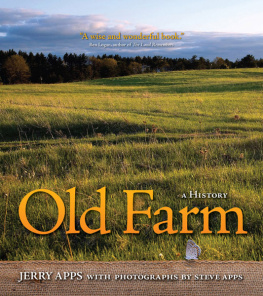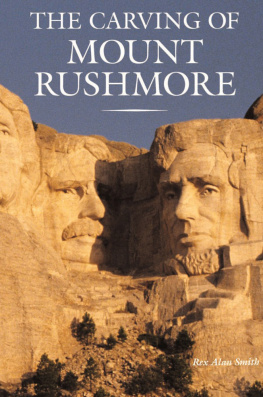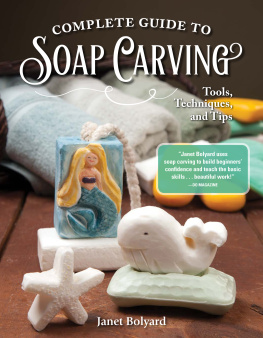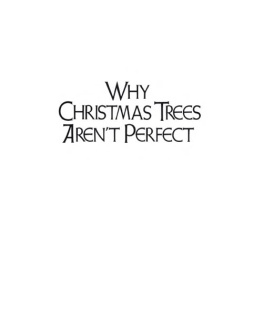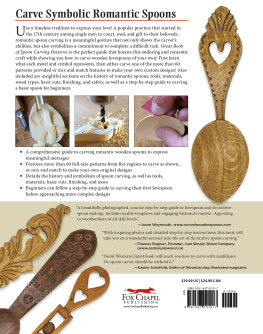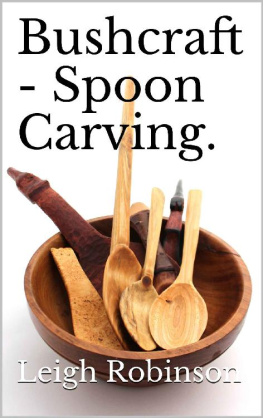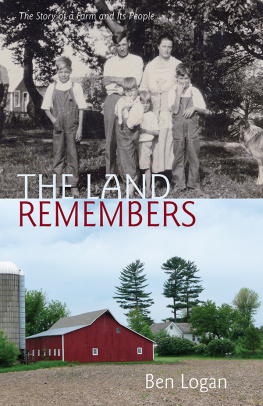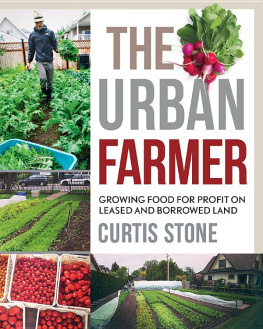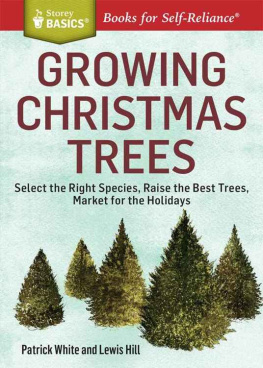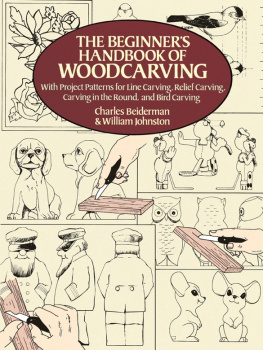Contents
Guide
Pagebreaks of the print version
PRAISE FOR
Carving Out a Living on the Land
Resourcefulness, inventiveness, a sense of tradition, a relentless capacity for hard physical laborthese are the qualities that surface again and again in Carving Out A Living On the Land .
From the foreword by Verlyn Klinkenborg
In this no-nonsense resource for novice Christmas Tree farmers (and all farmers), Van Driesche shares his sustainable success story in pragmatic and engaging detail.
Forrest Pritchard, farmer; New York Times bestselling author of Gaining Ground
A couple of years ago I bought a Christmas tree from Emmet Van Driesches little family in the woods. I immediately wanted to move in with them. They radiated the kind of peaceful contentment that comes with doing work that makes sense to you and that you are good at. But since moving in with them would be creepy, I am glad to have this book, a thorough and generous guide to shaping your world not only to your own happiness, but the worlds as well.
John Hodgman, host of Judge John Hodgman ; author of Vacationland
Carving Out a Living on the Land describes the joy of living a simpler life in tune with nature, without skipping on the nitty gritty of hard work and paying the bills. Along the way, Emmet shows that spoon carving is not just a wonderful pastime but can be part of a thriving modern business, filling ones time between the hustle and bustle of childcare and tree cutting with calm, spoon-y industriousness.
Barn the Spoon, founder, Spoon Club and The Green Wood Guild; author of Spoon
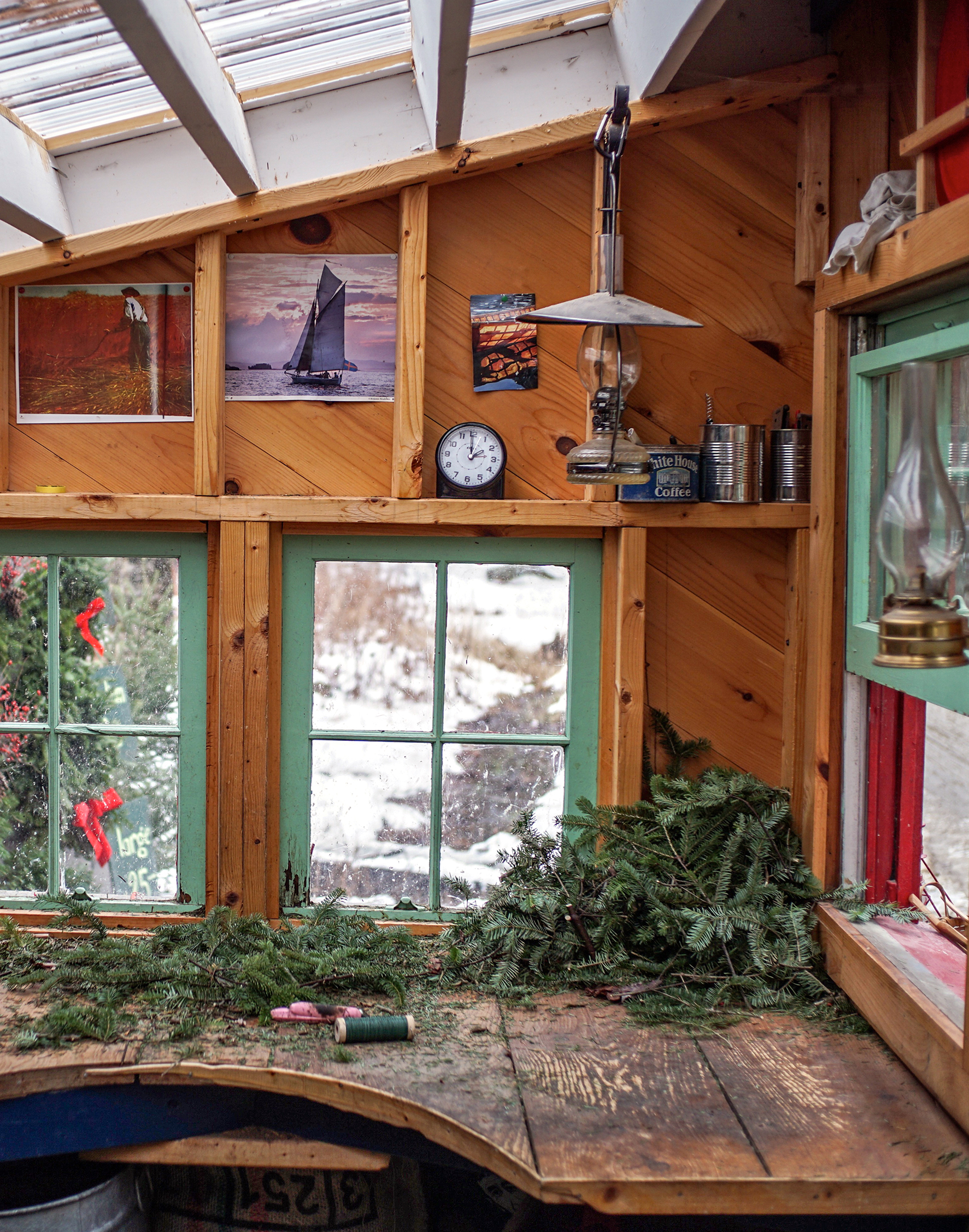
Carving Out a Living on the Land
Lessons in Resourcefulness and Craft from an Unusual Christmas Tree Farm
Emmet Van Driesche
Foreword byERLYN KLINKENBORG
Chelsea Green Publishing
White River Junction, Vermont
London, UK
Copyright 2019 by Emmet Van Driesche.
All rights reserved.
Unless otherwise noted, all photographs copyright 2019 by Emmet Van Driesche.
No part of this book may be transmitted or reproduced in any form by any means without permission in writing from the publisher.
Project Manager: Alexander Bullett
Editor: Michael Metivier
Copy Editor: Deborah Heimann
Proofreader: Laura Jorstad
Indexer: Margaret Holloway
Designer: Melissa Jacobson
Printed in Canada.
First printing May 2019.
10 9 8 7 6 5 4 3 2 1 19 20 21 22 23
Our Commitment to Green Publishing
Chelsea Green sees publishing as a tool for cultural change and ecological stewardship. We strive to align our book manufacturing practices with our editorial mission and to reduce the impact of our business enterprise in the environment. We print our books and catalogs on chlorine-free recycled paper, using vegetable-based inks whenever possible. This book may cost slightly more because it was printed on paper that contains recycled fiber, and we hope youll agree that its worth it. Chelsea Green is a member of the Green Press Initiative (www.greenpressinitiative.org), a nonprofit coalition of publishers, manufacturers, and authors working to protect the worlds endangered forests and conserve natural resources. Carving Out a Living on the Land was printed on paper supplied by Marquis that is made of recycled materials and other controlled sources.
Library of Congress Cataloging-in-Publication Data
Names: Van Driesche, Emmet, author.
Title: Carving out a living on the land : lessons in resourcefulness and craft from an unusual Christmas tree farm / Emmet Van Driesche.
Description: White River Junction, Vermont : Chelsea Green Publishing, [2019] | Includes bibliographical references and index.
Identifiers: LCCN 2019000401| ISBN 9781603588263 (hardcover : alk. paper) | ISBN 9781603588270 (ebook)
Subjects: LCSH: Christmas tree growingMassachusetts. | FarmersMassachusettsBiography.
Classification: LCC SB428.3 .V36 2019 | DDC 635.9/775dc23
LC record available at https://lccn.loc.gov/2019000401
Chelsea Green Publishing
85 North Main Street, Suite 120
White River Junction, VT 05001
(802) 295-6300
www.chelseagreen.com
For Cecilia, with me shoulder-to-shoulder; and for Al Pieropan, who started it all.
CONTENTS
I dont know where Emmet Van Driesche learned to write, but I know that I had nothing to do with it. Fifteen years ago, in the fall of 2004, he took a nonfiction writing seminar I was teaching at Bard College. I recently re-read all the work Emmet submitted that semester, and I cant imagine what I found to say about it, except, perhaps, More, please. When a new semester begins, I always have a recurring fear: What if the students write so well that I have nothing to teach them? My fear is a class full of Emmets.
Too many Emmets isnt a problem most people have to worry about. In fact judging by the book you hold in your hands, most of us would probably welcome many Emmetson our farms, in our gardens, in our communities, in our conversations about the future. Resourcefulness, inventiveness, a sense of tradition, a relentless capacity for hard physical laborthese are the qualities that surface again and again in Carving Out A Living On the Land , along with a profound awareness of a shared ecological imperative.
That Emmet happens also to write well might seem like nothing more than a pleasant surprise. After all, you dont have to be a good writer to be a good farmer or a far-thinking environmentalist. It wouldnt surprise me to learn that in a list of desirable agricultural attributes most farmers would put good writer way below good pinochle playerand miles and miles behind, say, good hydraulic mechanic.
But if youre going to write about your farm, it helps to be a good writer. Every good book about farming inevitably proposes an argument about the nature of good farming, and the clearer that argument is, the better. And at its root, every good farm is also a work of imagination, a sustained exercise in problem-solving. Being a good farmer is more than an occupation: Its a preoccupation. In these and other ways, the good farmer resembles the good writer.
And theres a deeper link between the farmer and the writer, a kinship you can find in two very different essays: Aldo Leopolds The Farmer as Conservationist from 1939 and George Orwells Politics and the English Language from 1946. At first these essays, like their authors, seem to have no connection. Orwell is writing about the corruption of language by politics, and Leopold is writing about loss of diversity and complexity in the agricultural landscape. But both make the underlying argument that only individualsnot institutionscan make a difference, and, to shift the emphasis slightly, that individuals can make a difference. The vitality of conservationin language and landscaperelies on what Leopold calls a positive exercise of skill and insight, not merely a negative exercise of abstinence and caution. As Orwell says, looking over the ravages of the early twentieth century, one cannot change this all in a moment, but one can at least change ones own habits.
I dont mean to load the arguments of these remarkable essays onto Emmets shoulders. He has enough to carry as it is, great bundles of balsam trimmings not least among them. Nor is Carving Out a Living on the Land polemical: It isnt making a grand proposition or telling you how to live. It simply shows us the choices that Emmet and his wife, Cecilia, have made and how they have made them. In a sense they are the new settlersnot lighting out for the territory or hoping to find virgin ground but taking over the land and, to a large extent, the practices of a local Christmas tree farmer in rural Massachusetts. If theres a treatise hidden in this book, it concerns the way the economies of the land and money itself are overlaid on the economy of the farmers body.


